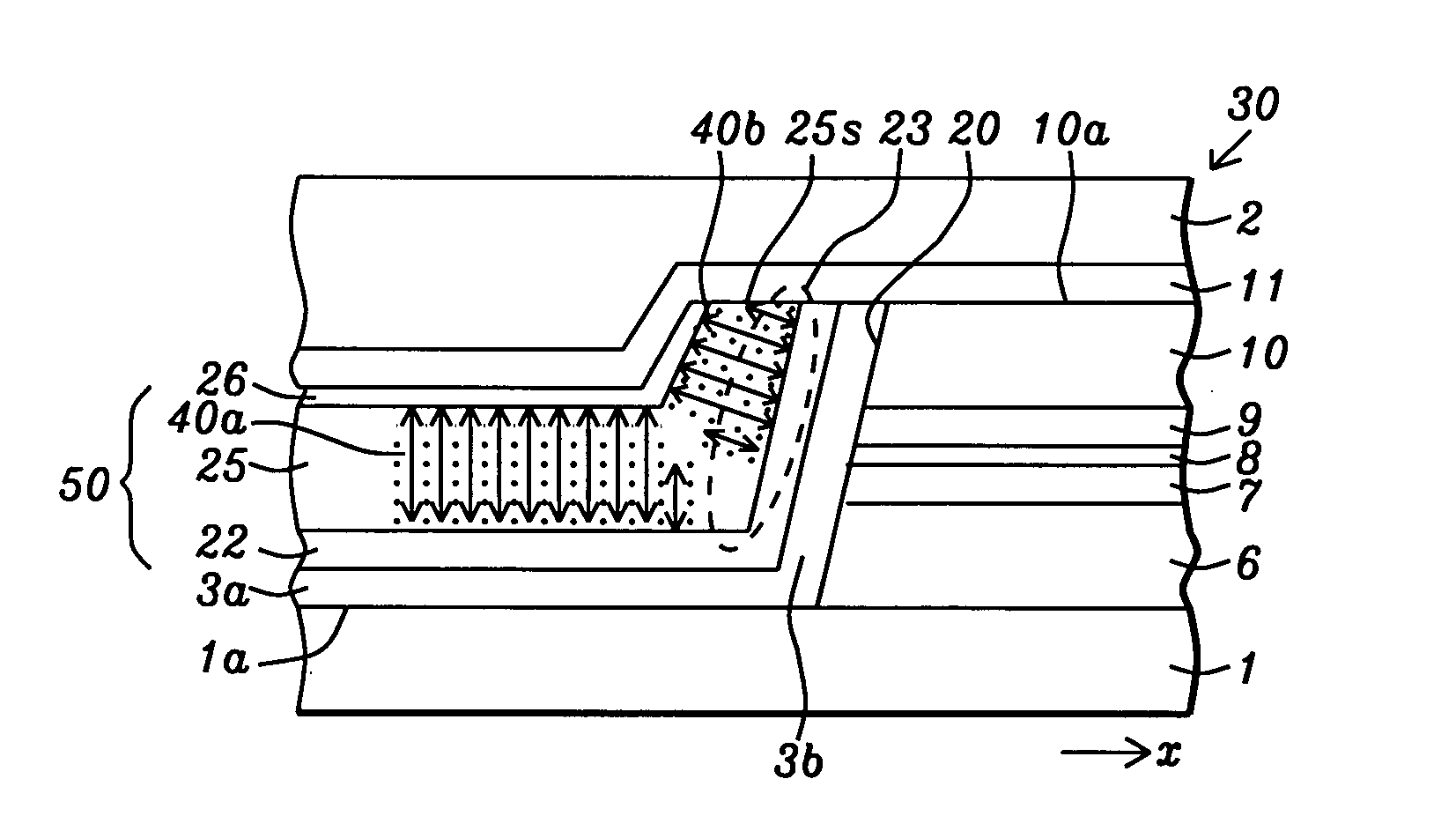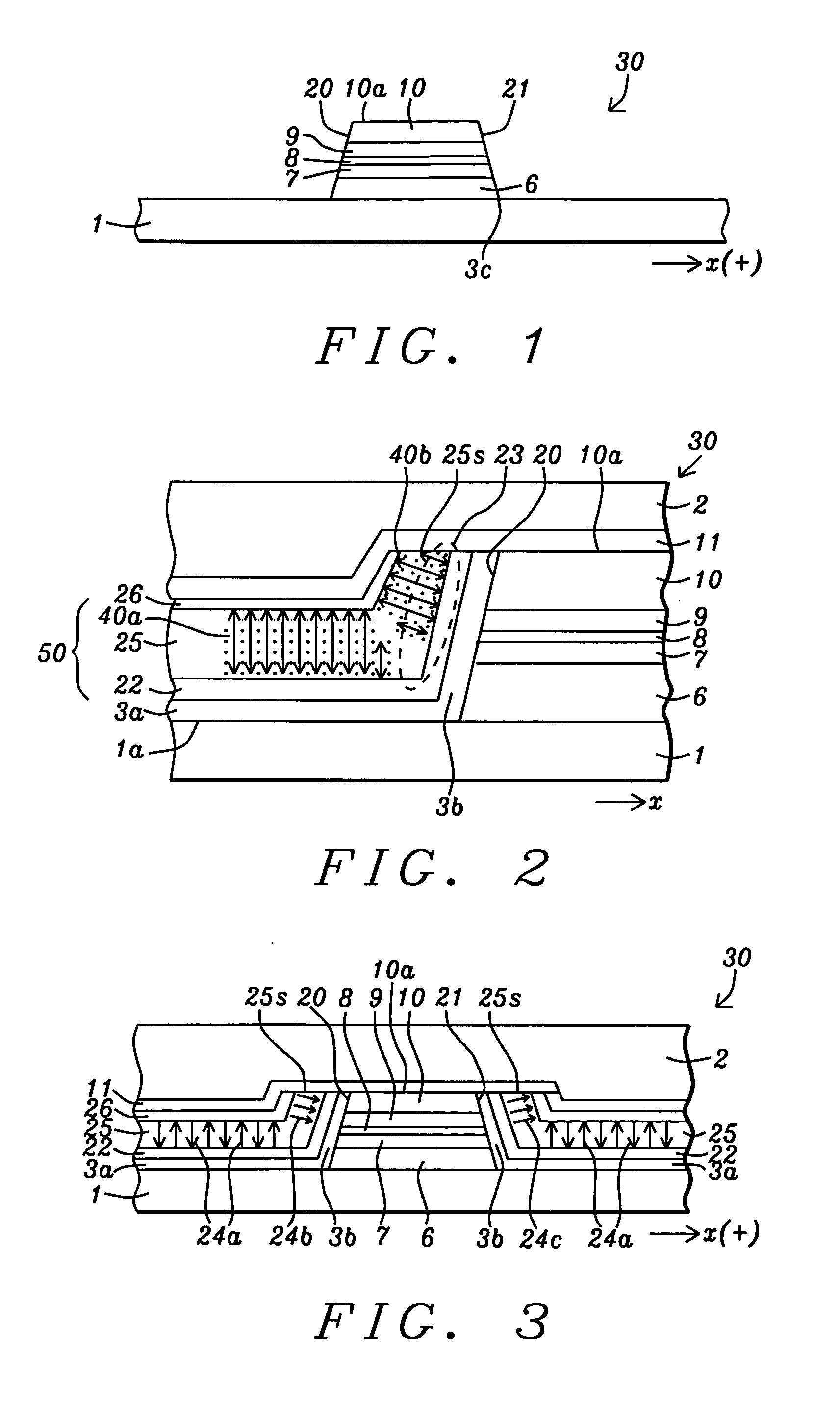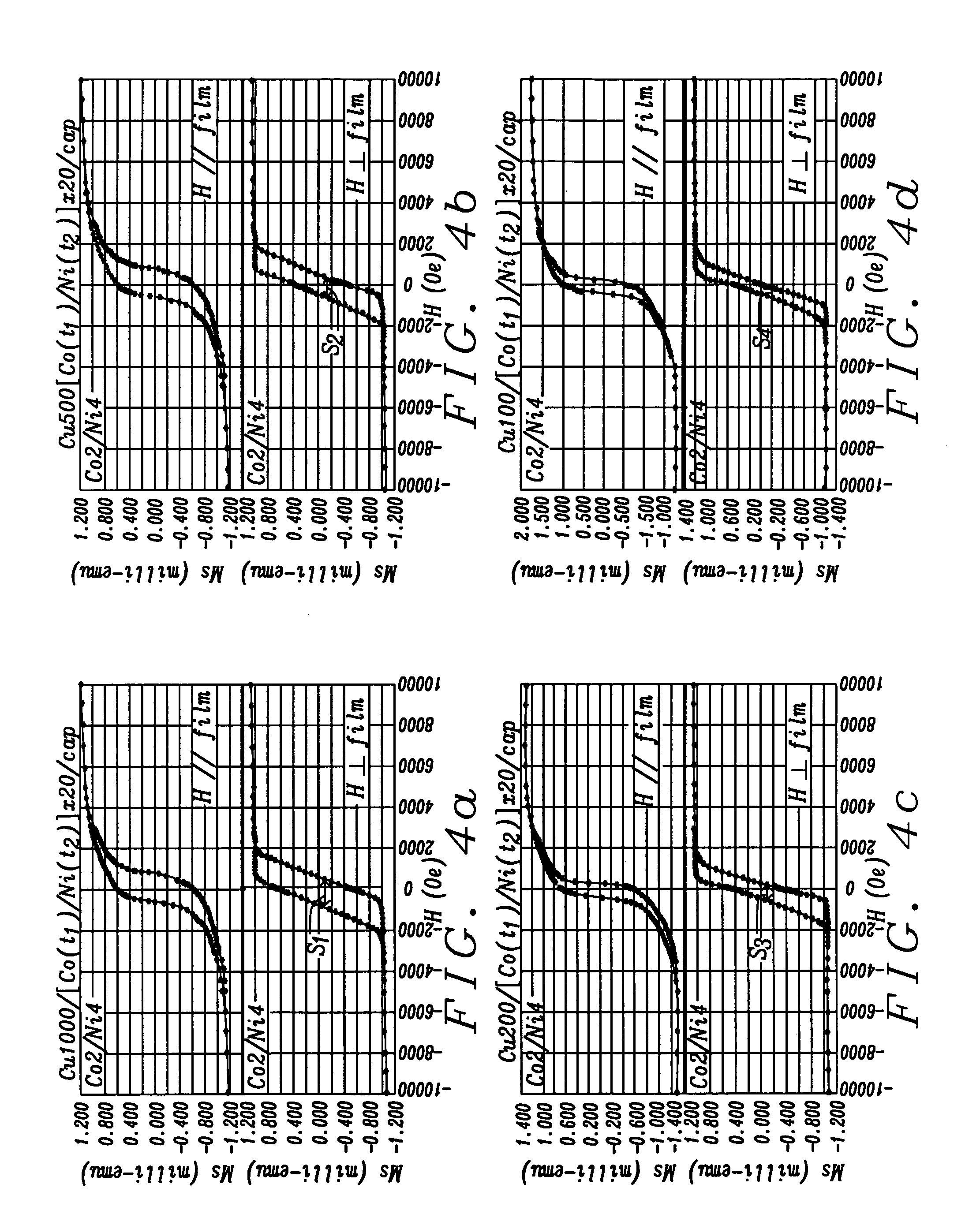Thin seeded Co/Ni multiplayer film with perpendicular anisotropy for read head sensor stabilization
a multiplayer film and perpendicular anisotropy technology, applied in nanoinformatics, instruments, transportation and packaging, etc., can solve the problems of low biasing efficiency from longitudinal hard bias structure, low rf power, and high inert gas pressure. , to achieve the effect of minimizing the impinging ion energy, low rf power, and low cos
- Summary
- Abstract
- Description
- Claims
- Application Information
AI Technical Summary
Benefits of technology
Problems solved by technology
Method used
Image
Examples
example 1
[0051]An experiment was conducted to demonstrate the effectiveness of forming a (Co / Ni)X laminated hard bias layer with regard to minimizing the required thickness of the seed layer in a hard bias structure. A stack comprised of a Cu seed layer, (Co / Ni)20 laminated layer where each Co layer is 2 Angstroms thick and each Ni layer is 4 Angstroms thick, and a Ru10Ta40 / Ru30 cap layer was fabricated in order to obtain PMA values from MH curves using a vibrating sample magnometer (VSM). The thickness of each layer in the composite cap layer is shown by the number following each of the elements. Copper seed layer thickness was reduced from 1000 Angstroms in FIG. 4a to 500 Angstroms in FIG. 4b, 200 Angstroms in FIG. 4c, and to 100 Angstroms in FIG. 4d. The upper plot in each figure shows the horizontal to plane component of each magnetic field and the lower plot in each figure illustrates the perpendicular magnetic anisotropy (PMA) component. It should be understood that the distances s1-s4...
example 2
[0052]In a second experiment, a Ta / Ru underlayer was inserted to form a Ta / Ru / Cu seed layer and further enhance the (111) texture of the upper Cu layer according to an embodiment of the present invention where the seed layer is represented by Ta / M1 / M2 and M1 is unequal to M2. The lower Ta layer thickness is 30 Angstroms and the middle Ru layer thickness is 20 Angstroms. The other layers in the hard bias stack have the same composition and thickness as indicated in the previous example. As a result, PMA is further improved with respect to FIGS. 4a-4d as indicated by the MH curves in FIGS. 5a-5d. Note that the distance s5 in FIG. 5c is greater than s4 where the Cu layer in both cases is 100 Angstroms thick and indicates larger PMA in an overlying (Co / Ni)X hard bias layer when a Ta / Ru / Cu seed layer is employed. Those skilled in the art will also recognize that the sloped portions of the curves in FIGS. 5a-5d are more vertical than the sloped portions in FIGS. 4a-4d which represents imp...
example 3
[0053]To further explore the effect of thinning the upper Cu layer in the composite seed layer described in Example 2, the upper Cu layer was thinned from 50 Angstroms in FIG. 6a to 30 Angstroms in FIG. 6b, and completely removed in FIG. 6c. Note that the resulting seed layer has a 30 Angstrom thick Ta layer and a 50 Angstrom thick Ru layer in the Ta / Ru configuration and represents a Ta / M1 seed layer according to another embodiment of the present invention. In addition, the thickness of each Ni layer in the (Co / Ni)20 hard bias stack was increased slightly to 5 Angstroms. We have found that excellent PMA properties are retained in the (Co / Ni)20 multilayer even when the Cu layer in the composite seed layer is removed as illustrated in FIG. 6c.
PUM
| Property | Measurement | Unit |
|---|---|---|
| Temperature | aaaaa | aaaaa |
| Temperature | aaaaa | aaaaa |
| Time | aaaaa | aaaaa |
Abstract
Description
Claims
Application Information
 Login to View More
Login to View More - R&D
- Intellectual Property
- Life Sciences
- Materials
- Tech Scout
- Unparalleled Data Quality
- Higher Quality Content
- 60% Fewer Hallucinations
Browse by: Latest US Patents, China's latest patents, Technical Efficacy Thesaurus, Application Domain, Technology Topic, Popular Technical Reports.
© 2025 PatSnap. All rights reserved.Legal|Privacy policy|Modern Slavery Act Transparency Statement|Sitemap|About US| Contact US: help@patsnap.com



